Minority Studies
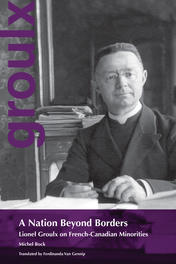
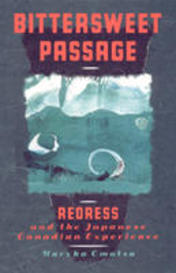
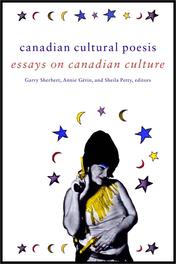
Excerpt from Canadian Cultural Poesis: Essays on Canadian Culture edited by Garry Sherbert, Annie Gérin, and Sheila Petty
From Chapter 6. Marketing Ambivalence: Molson Breweries Go Postcolonial by Cynthia Sugars
The paradox of a unifying Canadian ambivalence is central to Molson Breweries' “I am Canadian ad” campaign. Launched in 1994 and reaching its height in the famous “Rant” advertisement aired on national television (and in movie theatres) in March 2000, the campaign tapped into the subjugated nationalism lurking in the Canadian psyche at a period when nationalist sentiment was thought to be all but extinct. Of course, Molson had been using a “Canadian pride platform” to sell their product well before this. 12 The company's prime product is called “Canadian”; it sponsors Hockey Night in Canada and the Molson Indy, not to mention the prestigious Molson Prize for contribution to the arts; and, in the 1980s, Molson's became a national-cultural symbol through its association with the beer-drinking Canadian archetypes Bob and Doug MacKenzie on SCTV. Molson's had all but cornered the market in Canadian patriotism: “The firm that brought you Canada's first beer (1786) and, for a time, its most glorious hockey dynasty (Les Canadiens) now brings you Canada's most in-your-face patriotism. Never mind beer, Molson has become the purveyor of the national dream, “ wrote one reviewer for the Calgary Herald. 13
Publicity manager Michelle Robichaud stated that there was nothing subtle about the Molson “Rant”, 14 and indeed, on the surface, the text of the ad appears straightforward. The scene opens with a darkened stage, probably a movie theatre, 15 on which stands a solitary microphone. Enter average “Joe Canadian”, dressed in jeans and lumberjack shirt, who shyly begins to address the various stereotypes of Canadian identity. His monologue builds to a crescendo, a “rant”, as he enunciates the numerous ways Canadians are different from Americans. In the process, images of his text are flashed on an immense screen behind him. The “rant” culminates in Joe's final assertion--”I am Canadian! “--and concludes with him mumbling thank you and sheepishly walking off the stage.
My interest is not so much in the nationalist jingoism of the advertisement, but rather in its method--the way that the ad was able to (re)package Canadian nationalism to make it palatable to the seemingly “post-national” audience of the late twentieth century. In effect, by marketing a certain narrative of Canadian postcolonial identity and by dramatizing a central conflict within postcolonial expression more generally, Molson's was able to tap into the conflicted nationalist subtext that informs Canadian culture and identity. Through its self-referential stance, the ad performs a version of national skepticism, for even as it promotes Canadian nationalism, it dramatizes a debunking of national identity constructs. To adapt Homi Bhabha's phrasing, “The Rant” is a nationalist text that performs Canada as a nation “which is not one. “
In a very obvious way, then, “The Rant” invites a postcolonial analysis. A postcolonial commendation of the text might celebrate it as an instance of Canadian expression in the face of American cultural imperialism. It might highlight the ways it pokes fun at national stereotypes and utilizes the celebrated mode of Canadian self-deprecating irony. The ad also attends to the important issue of language, and how a former British colony makes the English language its own. Thus, for instance, Joe rants about how we use the word “chesterfield” to mean couch, and say “zed” instead of “zee”. 16
A postcolonial critique of the advertisement might comment on the ways it espouses conventional liberal values and does so from a young, white, middle-class, Anglo male perspective. The ad, then, speaks to only a select segment of the Canadian population. In one swoop, it excludes Canada's Inuit peoples by distancing “Joe Canadian” from those who eat whale blubber and live in igloos. It evokes a history of conquest and settlement in its allusion to fur traders and lumberjacks, and hence sets itself squarely within the context of European colonialism (Joe, you might say, is the prototype of the white, male settler subject). The speech, in fact, is set to the soundtrack of the stirring anthem of British imperialism, Sir Edward Elgar's pomp and circumstance march, “The Land of Hope and Glory”. It excludes many recent immigrant groups through Joe's claim to speak English and French as his native tongue, and in the clearly Anglo-Saxon names of other Canadians that he may or may not know personally: Jimmy, Sally, or Suzie, and so on. Finally, despite its nod to French Canada, the ad could not be marketed in Quebec, for obvious nationalist (perhaps even postcolonial) reasons. 17 All of this confirms what Himani Bannerji says about the selective nature of the national imaginary: “It is obviously a construction, a set of representations, embodying certain types of political and cultural communities and their operations. “18 Despite its apparent claims to an encompassing and inclusive Canadian identity, “The Rant” calls attention to the gaps within the national rhetoric, spotlighting the very people who are outside its marketing (and nation-making) radar. Some Canadians, the ad suggests, are more Canadian than others. If “The Rant” can be deemed postcolonial at all, it is surely as an instance of a compromised postcolonialism through its invocation of a nation that disavows its fraught origins. In this way, it dramatizes the dilemma at the core of postcolonial theory itself, what Alan Lawson identifies in terms of a “double move [that] might recognize the resistance in nationalisms while recognizing their concomitant containment”. 19
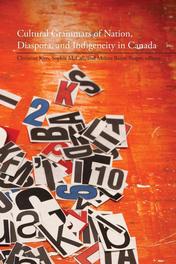
Excerpt from Cultural Grammars of Nation, Diaspora and Indigeneity in Canada edited by Christine Kim, Sophie McCall, and Melina Baum Singer
From the first chapter Diaspora and Nation in Métis Writing by Sophie McCall
For the past several years, a growing split has become increasingly evident in critical studies of diasporic and Aboriginal literatures in North America: while most critics of diasporic literatures engage with questions of migrancy in an era of transnational corporatization, the majority of critics of Aboriginal literatures have turned to the language of sovereignty and nationhood in an era of land claims, self-government agreements, and modern-day treaties. On the surface, this gap may seem appropriate. Theories of diaspora may be best suited to address immigrant experiences of displacement, while sovereignty, nationhood, and cultural autonomy are key terms to address current trends in Native politics. Many Aboriginal literary critics, such as Lee Maracle (1996), Craig Womack (1999), and Lisa Brooks (2006), directly link their arguments for “intellectual sovereignty” to current political negotiations over land and governance. Meanwhile, in the work of critics engaged with studies of diaspora—such as James Clifford (1997), Diana Brydon (2000), and Lily Cho (2006)—the language of nation is an unresolved tension, as these critics attempt to grapple with complex transnational formations of identity, labour, technology, and security. It is possible, as Brydon has argued, that “concepts of diaspora reach their limits in the claims to indigeneity” (23), especially in light of current decolonization movements in Aboriginal communities.
However, in this chapter I argue that a diasporic-Indigenous-sovereigntist critical approach may be best suited to address Métis writing, which paradoxically enacts national (i. e. , the Métis nation) and diasporic (i. e. , Métis-sage) identifications. 1 The work of Gregory Scofield, a Métis poet and writer whose ancestry can be traced back five generations to the Red River Settlement, and whose father he recently discovered was Polish-Jewish and German, underlines the necessity to articulate a flexible critical framework that explores both diasporic and national imaginings. Reading the poetry collections Native Canadiana: Songs from the Urban Rez (1996), I Knew Two Métis Women (1999), and Singing Home the Bones (2005), as well as his memoir Thunder through My Veins: Memories of a Métis Childhood (1999), I argue that nation and diaspora cannot be understood as binary opposites, but rather should be viewed as interdependent and mutually constitutive. More pressingly, I argue in favour of bringing in conversation discussions of diaspora, Aboriginal literary nationalism, and Métis subjectivity for the following reasons. Theories of diaspora may offer some vital insights into the history of displacement of Aboriginal peoples in Canada (i. e., the creation of reserves, the forced relocation of Aboriginal communities, and the scattering of Aboriginal communities and families through residential schools and foster care). By countering the tendency to look at specific diasporas separately, and to hierarchize them according to unspecified criteria, as Lily Cho warns against, we have an opportunity to build coalitions between disparate minority histories and to produce a model for relational history writing (Cho 13). Diaspora may also help address experiences of mixed-race, urban, or off-reserve Native peoples, who may or may not maintain strong ties to a sovereigntist nation based on a defined territory. We might garner a better understanding of sovereignties-in-motion, or confederacies, and develop new ways of conceptualizing Native nationalisms that address the wide range of relationships that Aboriginal peoples have to their ancestral territories. 2 By the same token, theories of Aboriginal nationhood have much to contribute to conversations about diaspora. Indigenous sovereigntist perspectives may help articulate community-based processes of participatory citizenship. Diasporic and Indigenous-sovereigntist standpoints share the desire to challenge settler nationalisms and expose the exclusions that have produced Canadian citizenship, even as they grapple with the often devastating effects of a highly mobile, neo-liberal, global capitalism. And theories of diaspora, in conjunction with theories of Indigenous sovereignties, potently acknowledge the underlying maps of Native North America and how First Nations territories traverse the 49th parallel.
It is my hope that the very awkwardness of a cobbled-together diasporic-Indigenous-sovereigntist critical perspective will produce a critical jostling that will question both Nativist and neo-colonial leanings that sometimes surface in these critical debates. In Scandalous Bodies: Diasporic Literatures in Canada (2000), Smaro Kamboureli states that her efforts to “trace the possibilities of diaspora” is reflective of her “desire to release [herself] from the hold that Nativism has on Canadian literature”(8). What she means by Nativism here is a false claim to belonging in settler-nationalist discourses, based on a manufactured one-to-one relationship between land, language, literature, and community. 3 Nativism produces a fairly high degree of anxiety in the work of other theorists of diaspora, most notably in the work of Paul Gilroy, who argues that diaspora furnishes an alternative to “primordial kinship and rooted belonging,” as well as a principled critique of “the disabling assumptions of automatic solidarity based on either blood or land” (Gilroy 123, 133, qtd. in Chariandy, “Postcolonial” par. 4). Similarly, in Nations without Nationalism (1993), Julia Kristeva speaks forcefully against Romantic-nationalist constructions, arguing that the “cult of origins” creates “a weird primal paradise family, ethnicity, nation, race” which, combined with “the soil, the blood, and the genius of the language,” are the roots of a xenophobic national idea (Kristeva, qtd. in Hoy 127). Yet as much as I support these critiques of Nativism, the question must be asked: What are the ramifications of the portrayals of claims to Indigenous belonging in light of Native peoples’ current struggles over land, resources, and development in Canada? Though none of these critics is talking about Indigenous populations in their hopes that diaspora as a critical tool may critique “a positivistic image of the ethnic imaginary” (Kamboureli xii), or offer a way to think “against race” (Gilroy), or imagine “nations without nationalism” (Kristeva), this silent space between Indigenous and diasporic theories demonstrates that bringing into conversation theories of diaspora, Aboriginal sovereignty, and Métis subjectivity is highly contentious; I need to proceed with caution in moving within and between these overlapping yet explosive discourses.
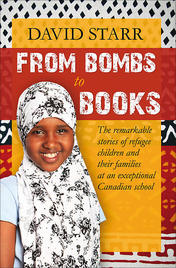
From Bombs to Books





